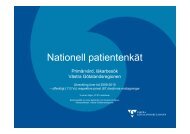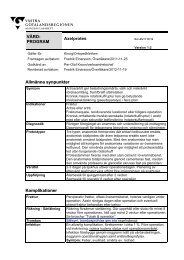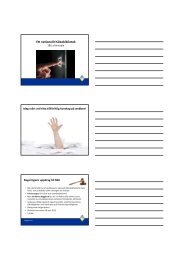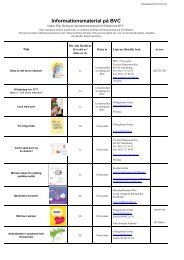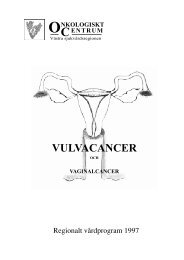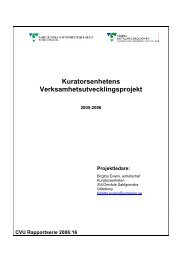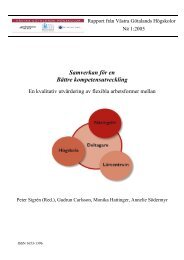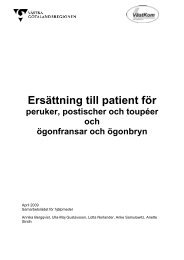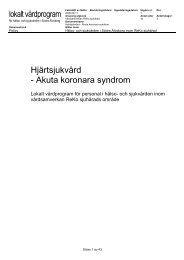FOURTEENTH ANNUAL EUROPEAN PRESSURE ULCER ...
FOURTEENTH ANNUAL EUROPEAN PRESSURE ULCER ...
FOURTEENTH ANNUAL EUROPEAN PRESSURE ULCER ...
Create successful ePaper yourself
Turn your PDF publications into a flip-book with our unique Google optimized e-Paper software.
Wednesday August 31st<br />
Proceedings of the 14th Annual European Pressure Ulcer Meeting<br />
Oporto, Portugal<br />
Epidemiology of pressure ulcers in Portugal – the current position<br />
Alves, Paulo 1 , Neves-Amado, João 1 , Amado, João 1 , Vieira, Margarida 1<br />
1 Health Sciences Institute – Oporto – Catholic University of Portugal<br />
Pressure ulcers are a major and global health<br />
problem. The healing is difficult and complex; they<br />
bring with them great physical, psychological and<br />
social suffering, decreases the quality of life of the<br />
person and their family members, and a major<br />
economic burden. The most recent definition of<br />
Pressure Ulcers is the International NPUAP-EPUAP<br />
Pressure Ulcer Definition, defined as “A pressure ulcer<br />
is a localized injury to the skin and/or underlying tissue<br />
usually over a bony prominence, as a result of<br />
pressure, or pressure in combination with shear. A<br />
number of contributing or confounding factors are also<br />
associated with pressure ulcers; the significance of<br />
these factors is yet to be elucidated” [1].<br />
The pathophysiology of pressure ulcers describes four<br />
mechanisms on the soft tissue in response to<br />
mechanical loading: localized isquemia, Impaired<br />
interstitial fluid flow and lymphatic drainage,<br />
reperfusion injury and sustained deformation of cells.<br />
Hospital Managers and Administrators are now giving,<br />
more attention to this problem. Some numbers show<br />
the extent of this issue, Pressure Ulcers are a major<br />
cause of morbidity in the population [2] and increased<br />
mortality [3].<br />
The surgeon general’s Healthy People 2010 document<br />
has identified pressure ulcers as a national health<br />
issue for long-term care, and the Health Care<br />
Financing Administration (HCFA; in June 2001<br />
renamed the Centers for Medicare & Medicaid<br />
Services) has designated pressure ulcers as one of<br />
three sentinel events for long-term care [4].<br />
Approximately 18% of hospitalised patients have a<br />
pressure ulcer [5].<br />
Regular measurement of pressure ulcer prevalence is<br />
for many of health care institutions an action of<br />
evaluation of the quality of care. Compare data is<br />
difficult to achieve, related to methodology, sample<br />
selection, collecting data tool, between others, that´s<br />
why literature shows a large variety of figures from<br />
different countries and different care-settings.<br />
Some data of incidence and prevalence of Portugal<br />
demonstrates completely different figures,<br />
demonstrating diverse realities. This is important to<br />
reflect on contributing factors, preventive measures,<br />
prevention material available, location and categories<br />
of the population studied.<br />
In Portugal the first prevalence study on wounds<br />
(EPNFeridas)[6], started on March 2011 and some<br />
preliminary data is already available. This study and<br />
the most recent prevalence studies used the EPUAP<br />
collection form toll [7].<br />
pjalves@porto.ucp.pt<br />
27<br />
In the year 2002 EPUAP, as published the results of<br />
the pilot study of prevalence [7], in hospital setting,<br />
from five European countries (Belgium, Italy, Portugal,<br />
United Kingdom and Sweden), with more than 5000<br />
patients. The median prevalence was 18,1%, in<br />
Portugal was 12.5%, there were evaluated 784<br />
hospitalized patients, of whom 98 had pressure ulcers.<br />
First study of prevalence and incidence of pressure<br />
ulcers, was conducted for the validation of the Braden<br />
Scale in Portugal [8], 9841 patients were evaluated,<br />
with a prevalence of 11,5%. The other study, the<br />
Project ICE [9], included hospitals, nursing homes and<br />
primary health care, the sample included 1,186<br />
individuals, with an overall prevalence of 14.2%, and<br />
the highest prevalence was found at the level of<br />
primary health care. The figures corresponding to the<br />
locations were similar, the same we cannot say about<br />
the categories of the pressure ulcers in Portugal.<br />
Professionals should be aware that most pressure<br />
ulcers can be prevented, and the approach with<br />
objective preventive measures, may be cheaper than<br />
the concern to treat this type of chronic wound<br />
[10,11,12]. It is known that the treatment and<br />
prevention of pressure ulcers is expensive for health<br />
services, yet there is little information on precise direct<br />
costs [2]<br />
The prevention and healing of pressure ulcers requires<br />
the cooperation and skills of the entire interdisciplinary<br />
health care team [4].<br />
Conflict of Interest<br />
None<br />
References<br />
[1] NPUAP & EPUAP (2009). Prevention and treatment of pressure ulcers:<br />
clinical practice guideline. Washington DC: National Pressure Ulcer Advisory<br />
Panel.<br />
[2] Franks, P. (2007). The cost of pressure Ulceration. EWMA Journal , 15-17.<br />
[3] Allman, R. (1997). Pressure ulcer prevalence, incidence, risk factors and<br />
impact. Clinical Geriatric Medicine , 241-246.<br />
[4] Lyder, C (<br />
[5] EPUAP, E. P. (2002). Summary report on the prevalence of pressure<br />
ulcers. EPUAP Review , 49-57.<br />
[6] Alves, P. Amado, J. Vieira, M (2011). Estudo Nacional de Prevalência em<br />
Feridas. Universidade Católica Portuguesa – Instituto Ciências da Saúde.<br />
[7] Clark, M. Bours, G. & Flour, T. (2002) Summary report on the prevalence<br />
of pressure ulcers. EPUAP Review 4.<br />
[8] Ferreira, L. Miguéns, C. Gouveia, J. Furtado, K. (2007) Risco de<br />
desenvolvimento de úlceras de pressão – Implementação Nacional da Escala<br />
de Braden. Lusociência. Loures<br />
[9] Grupo ICE (2008). Enfermagem e úlceras por pressão: Da reflexão sobre<br />
a disciplina às evidências nos cuidados. Imprenta Pelayo: Islas Canarias<br />
[10] Hopkins B, e. a. (2000). Reducing Nosocomial Pressure Ulcers in acute<br />
care facility. Journal of Nursing Care Quality , 28.<br />
[11] Whitefield, M. (2000). How effective are prevention strategies in reducing<br />
the prevalence of pressure ulcer? Journal Wound Care , 9: 261-266.<br />
[12] Lyder, C. (2006). Pressure Ulcer prevention and management. JAMA ,<br />
August - Vol 296 nº8, 23-30.<br />
Copyright © 2011 by EPUAP



